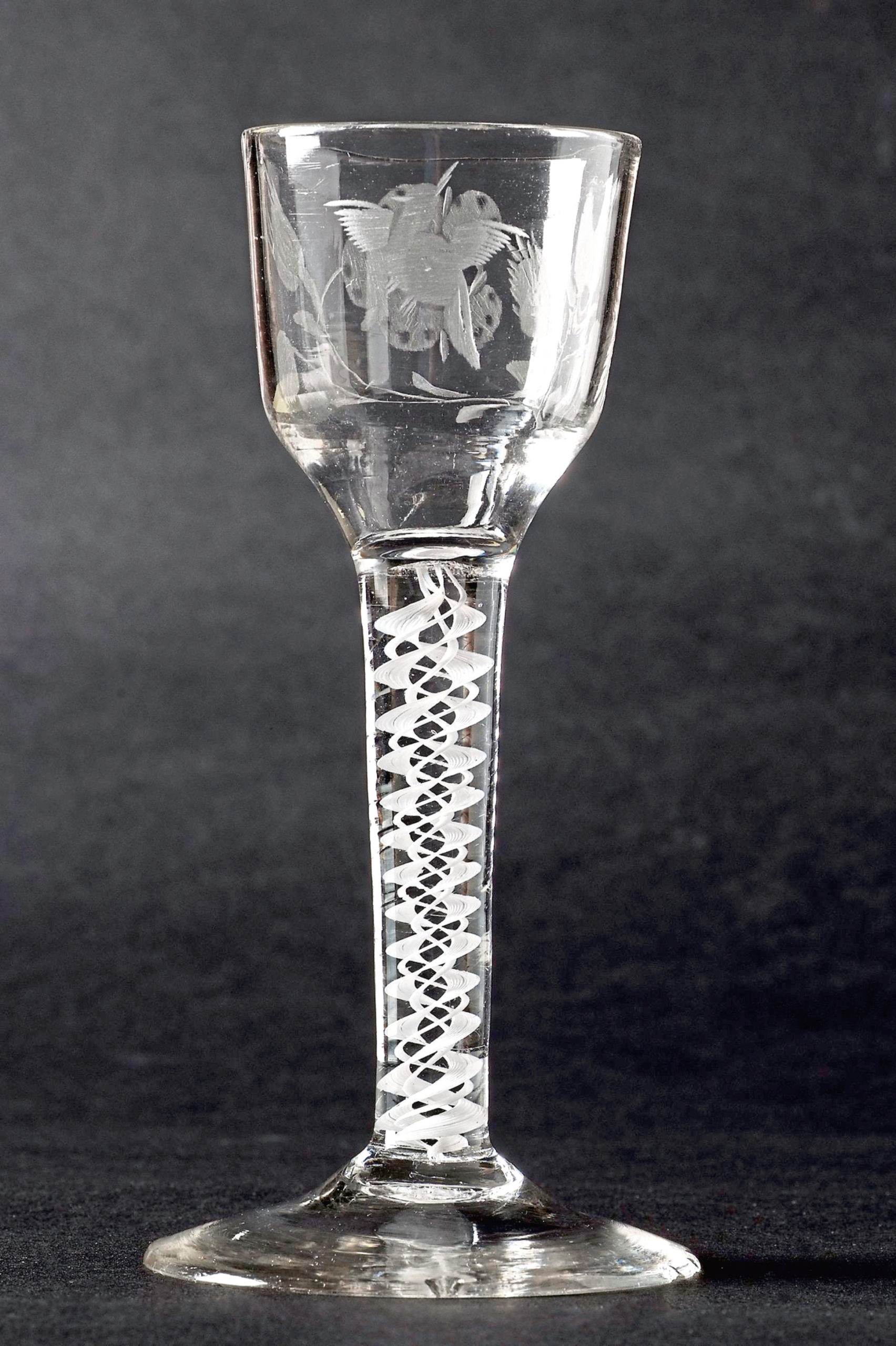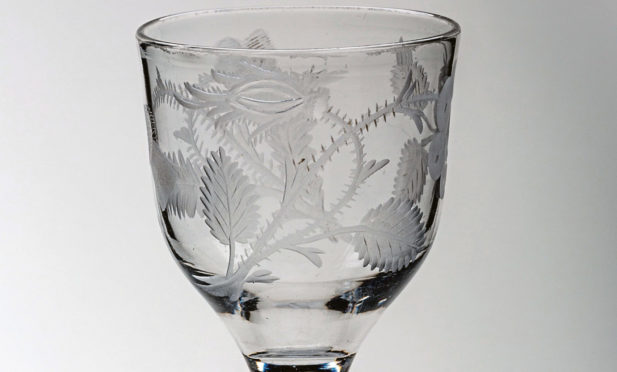Some objects that today are considered beautiful were once thought to be radical and seditious.
Jacobite drinking glasses are a good example. In the mid-18th Century, to have been found in possession of such a glass could have meant imprisonment, or worse, for the owner.
Some 275 years ago, on April 16 1746, at Drumossie Moor, near Inverness, the Stuart (Jacobite) attempt to regain the throne was lost at the Battle of Culloden.
The aftermath saw the Government embark on a vigorous campaign of suppression. Anyone who had sympathy with the Jacobite cause was liable to prosecution.
Whole communities in the Highlands were plundered, women raped, men executed, imprisoned or sent over the Atlantic as indentured ‘slaves’.
Despite the prospect of such severe consequences, sympathy for the Stuart cause lingered in many places in England, Ireland and Scotland.
The two Jacobite glasses held by Aberdeen Art Gallery are a link to those turbulent times – they carry hidden and indeed treasonable meanings in their decoration. We can date them both to around 1750-1760 as the form of intricate decoration in the stem was introduced around 1750. These Aberdeen glasses are quite ornate when compared to examples made earlier in the century or where the owner was likely to have been surrounded by loyalists of the House of Hanover.

Six-petalled rose
The first glass has engraved decoration which shows a six-petalled rose (rosa alba), which refers to James VIII (or III of Great Britain). The rose itself symbolises his legitimacy to the throne.
The glass also carries a rosebud which refers to Prince Charles Edward. The crested jay in flight signifies the hoped-for return of the Stuarts to the throne of Scotland, England and Ireland.
Rose alongside two thistles
The other glass in the collection has the familiar rose alongside two thistles to symbolise the origins of the Stuarts, as well as being the national flower of Scotland.
Such glasses would be used to drink toasts to the health of the exiled Stuarts, sometimes with a bowl of water on the table so the actual toast to ‘the King’ was qualified to that of ‘the King over the water’, in other words, the exiled Stuart monarchy.
Another popular toast was to, ‘the wee man in the black velvet waistcoat’, a reference to the molehill that tripped up William of Orange’s horse and ultimately led to William’s death.
What was drunk from the glasses? In many gatherings of Stuart sympathisers, it was often smuggled French wine or Cognac – not only was the toast subversive but also the liquor itself.










